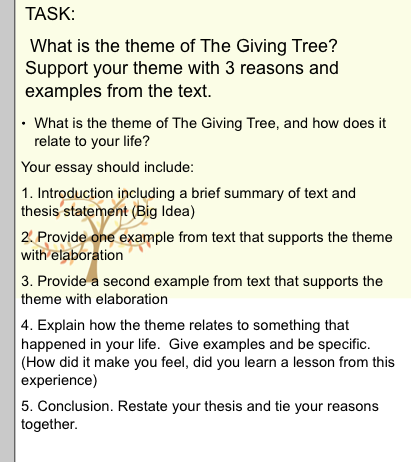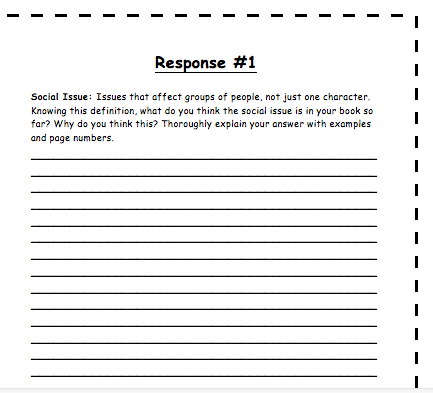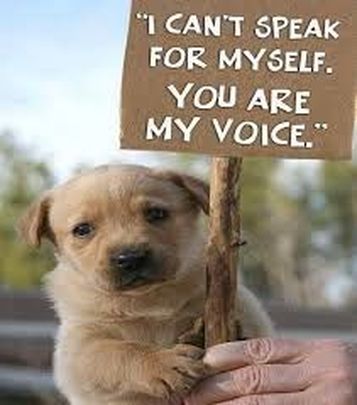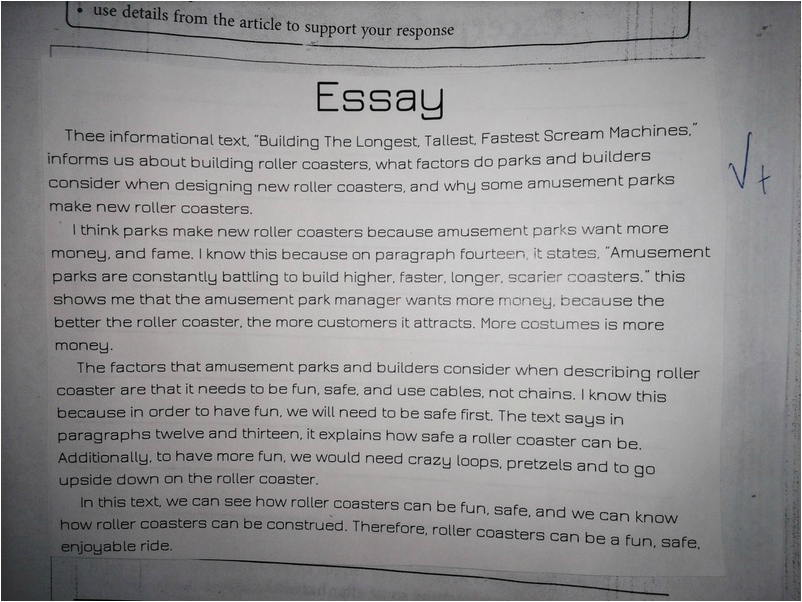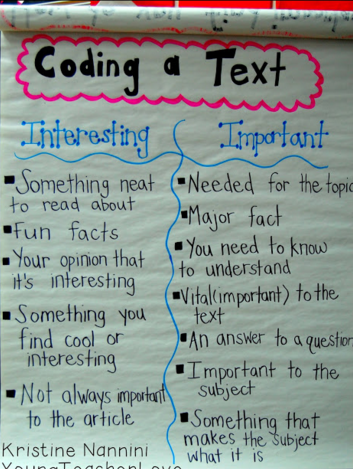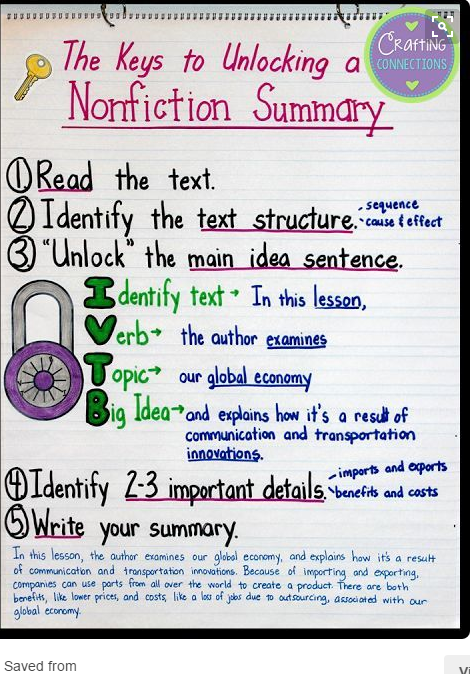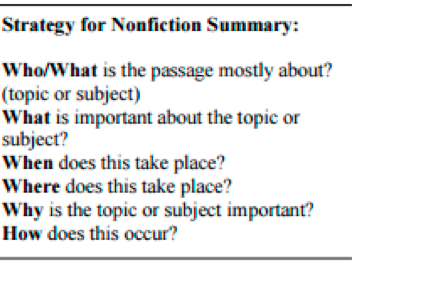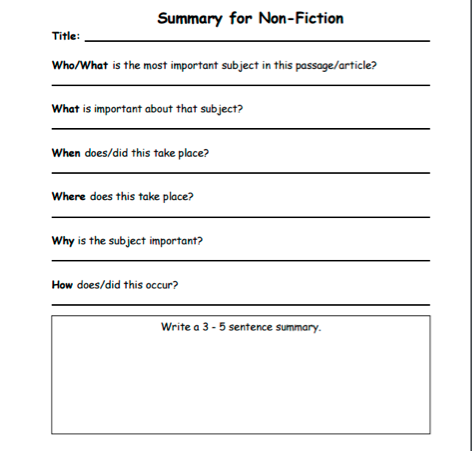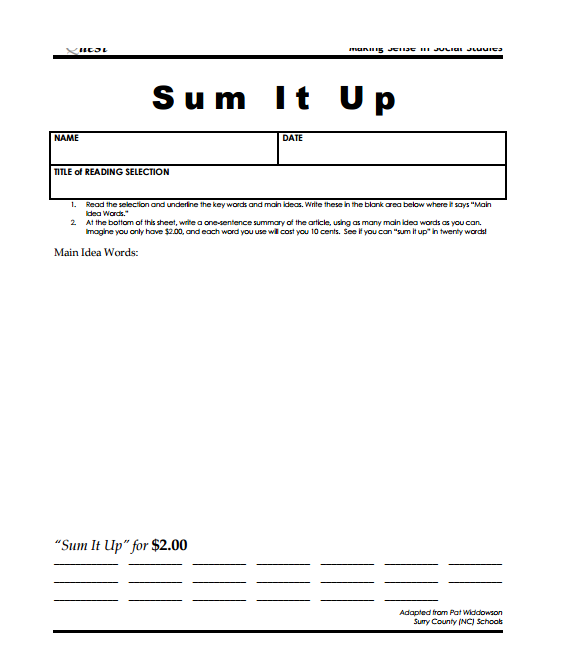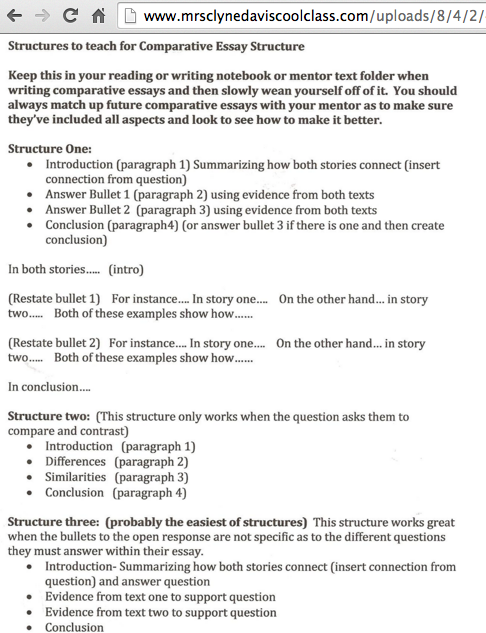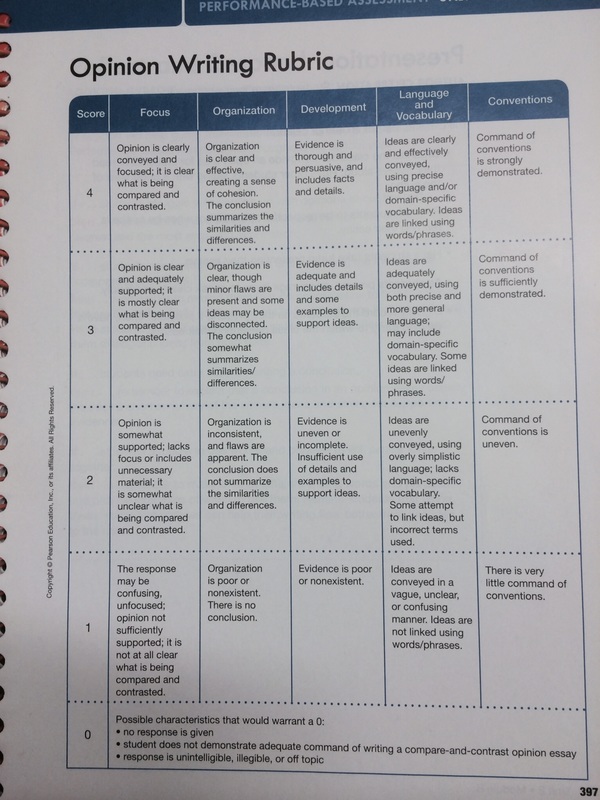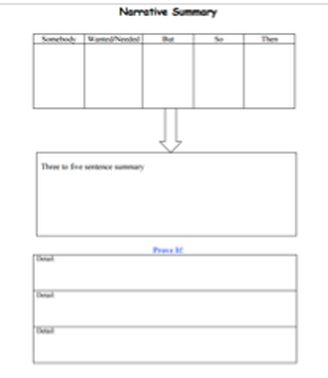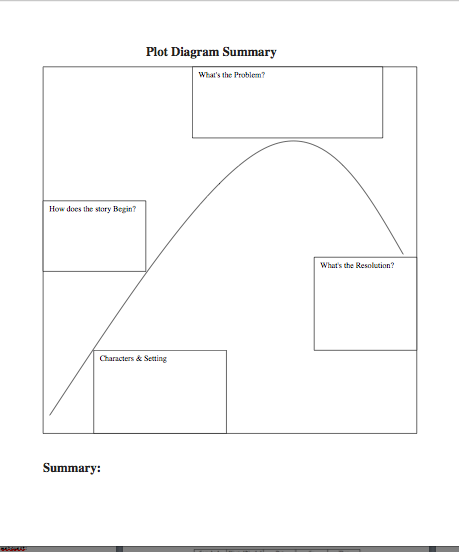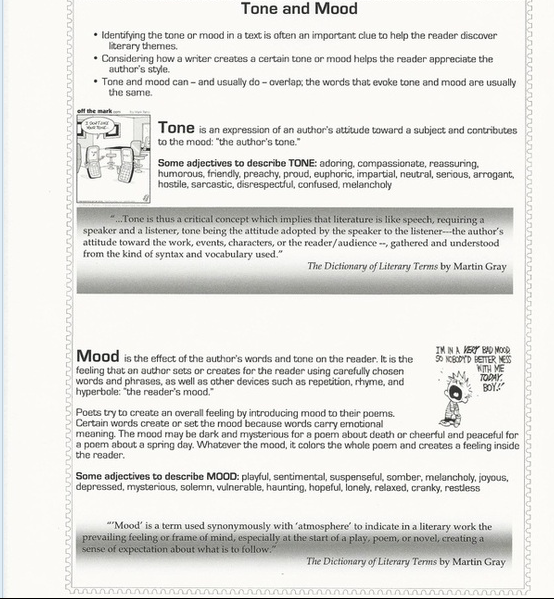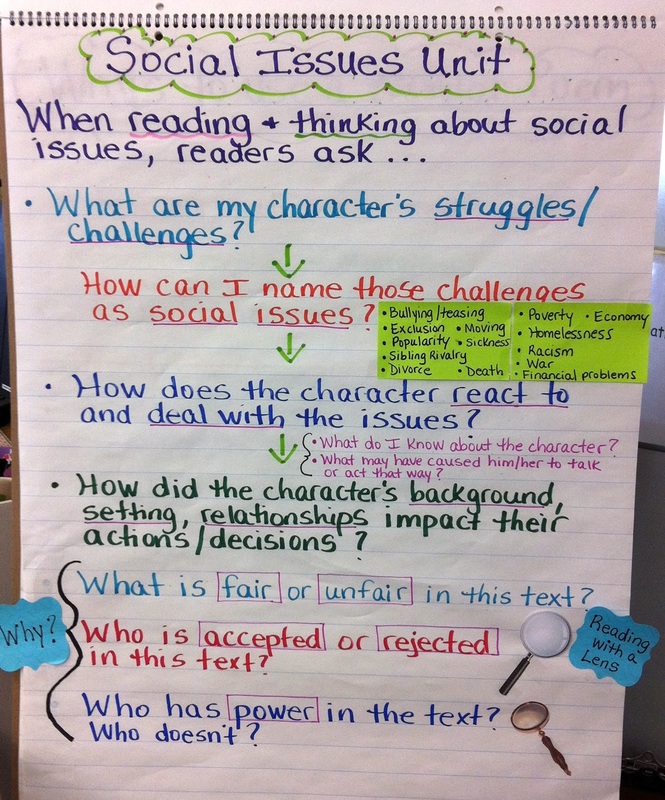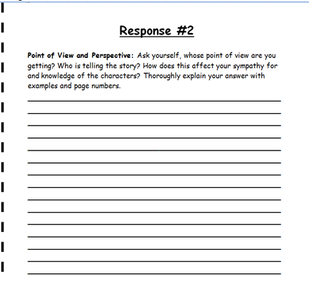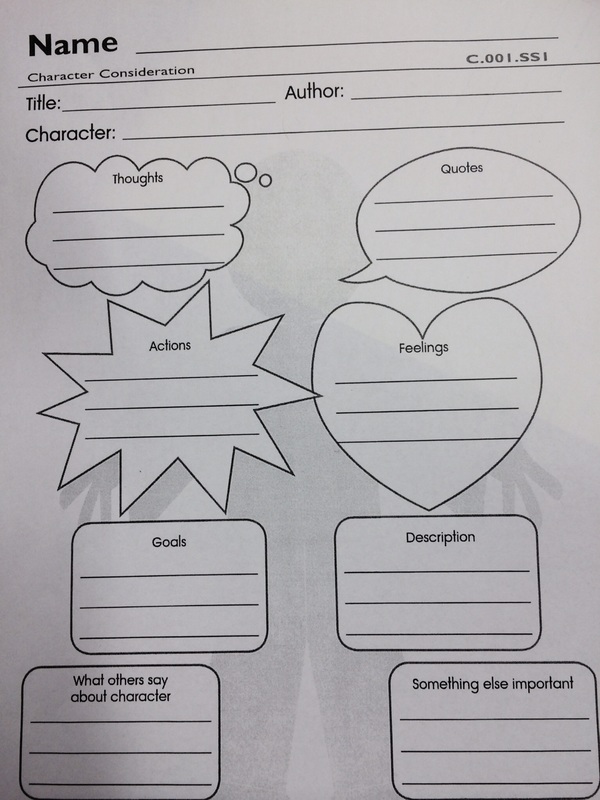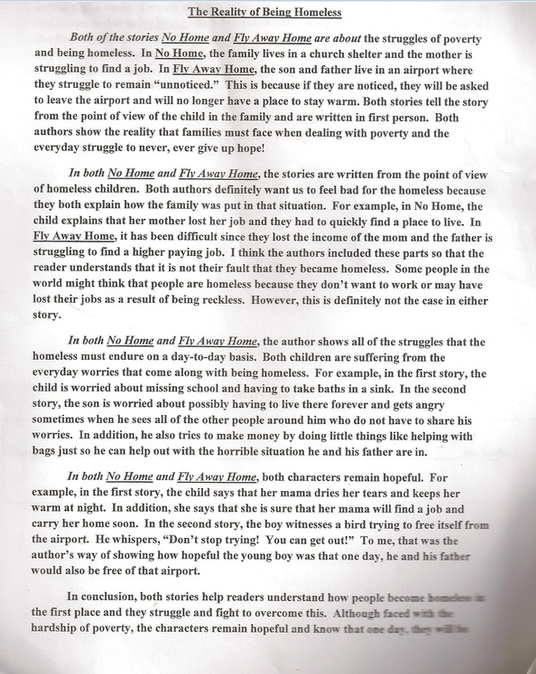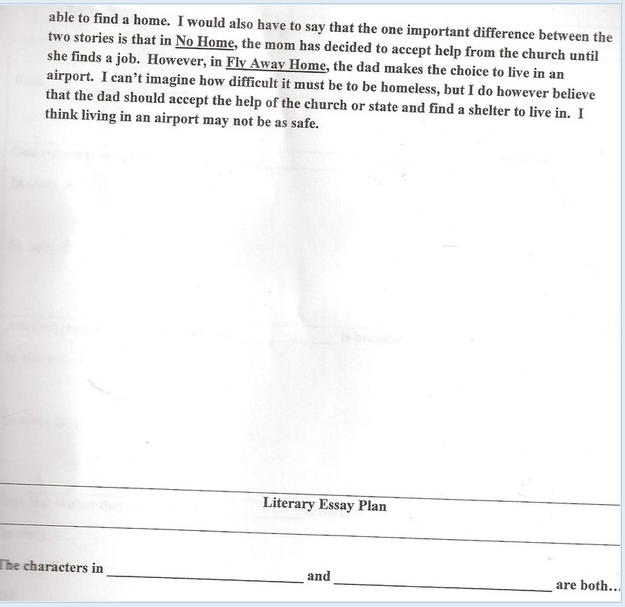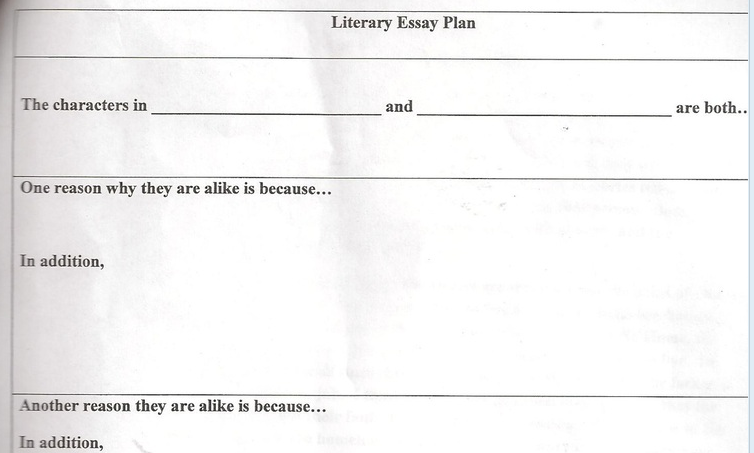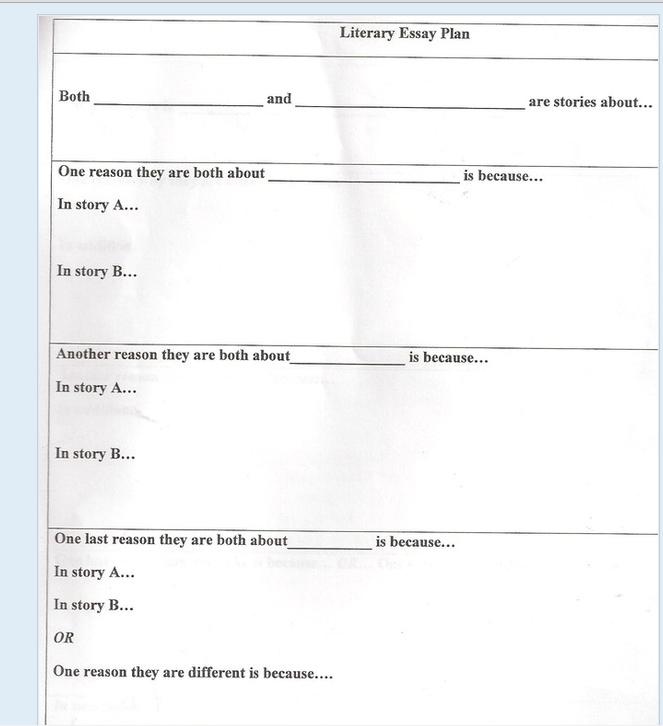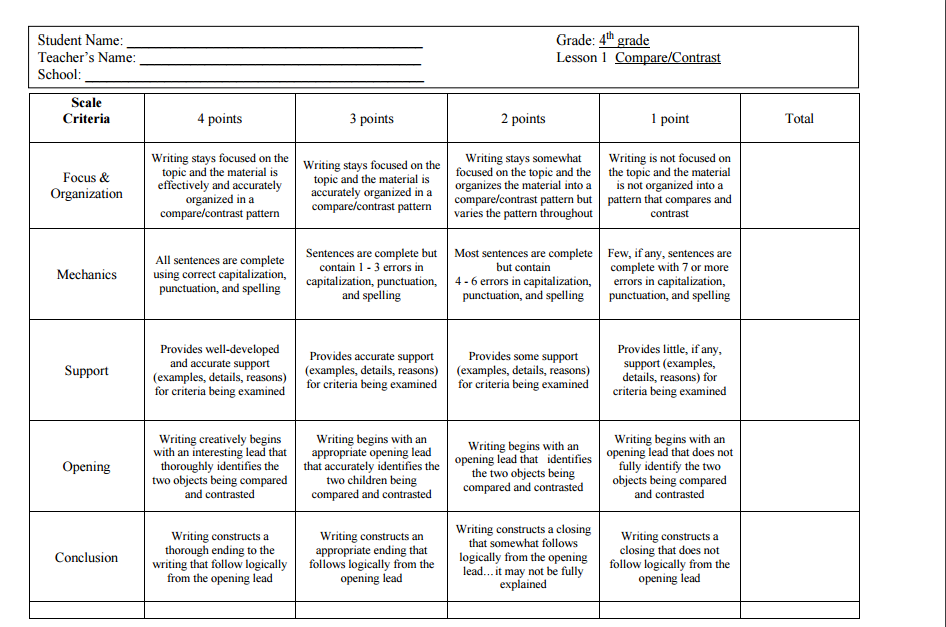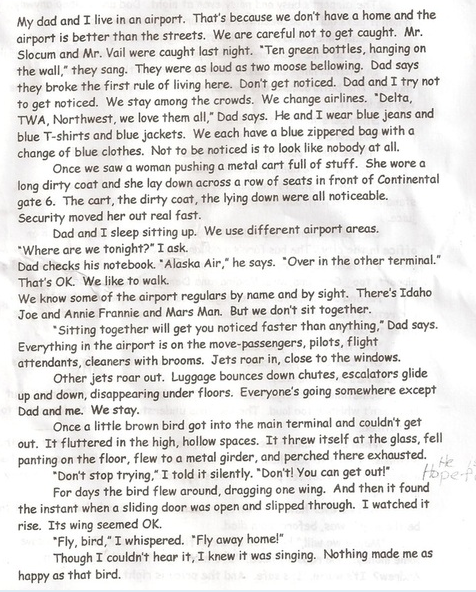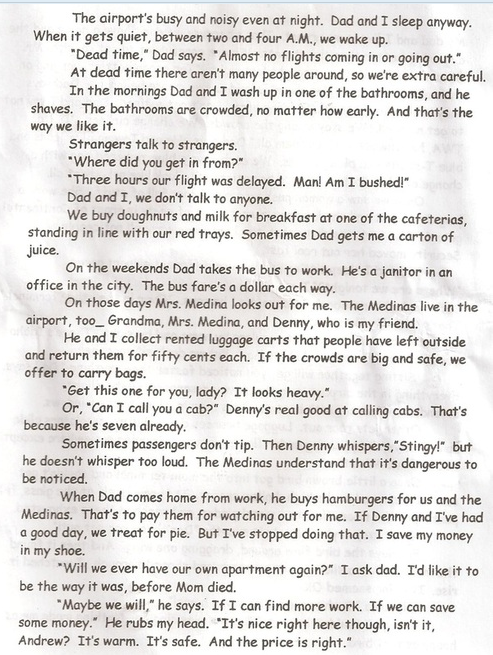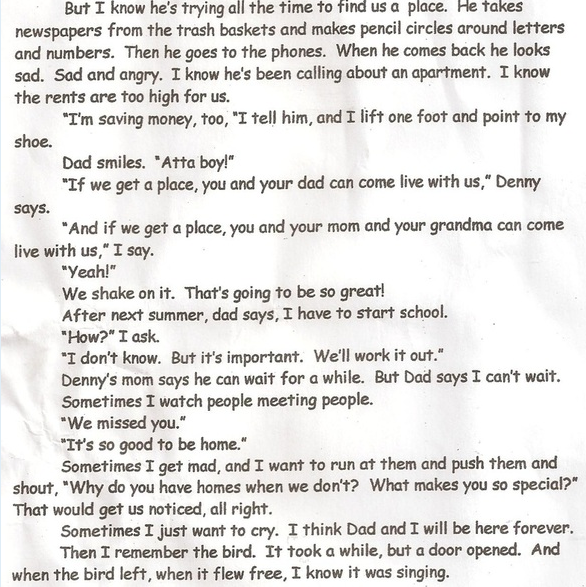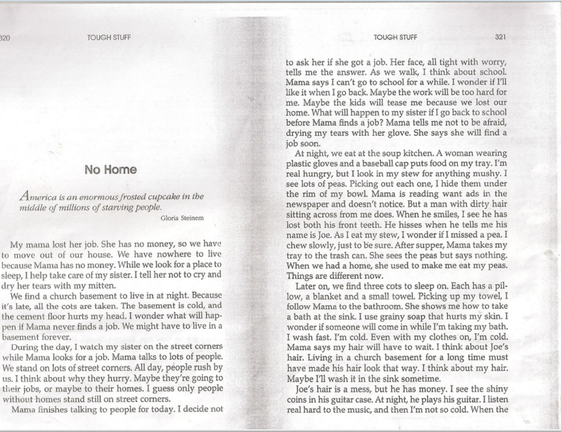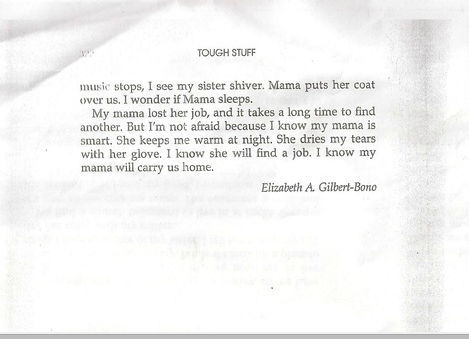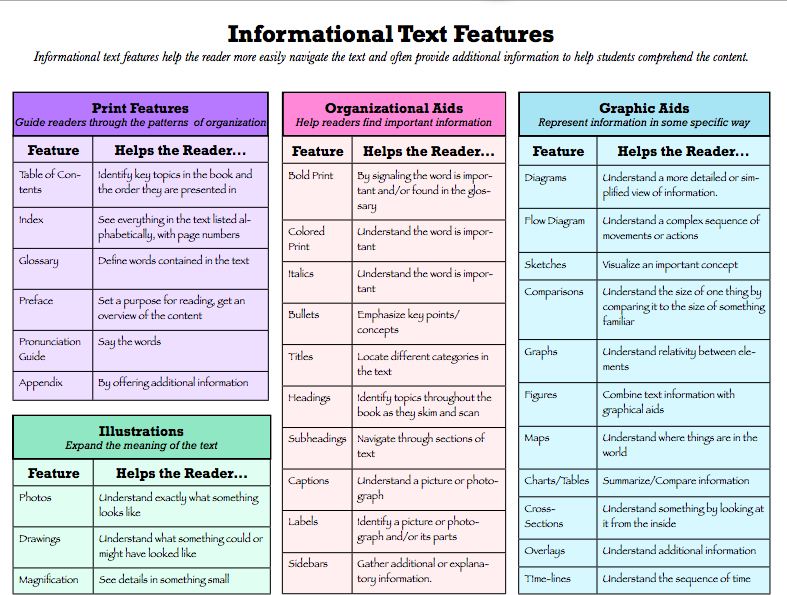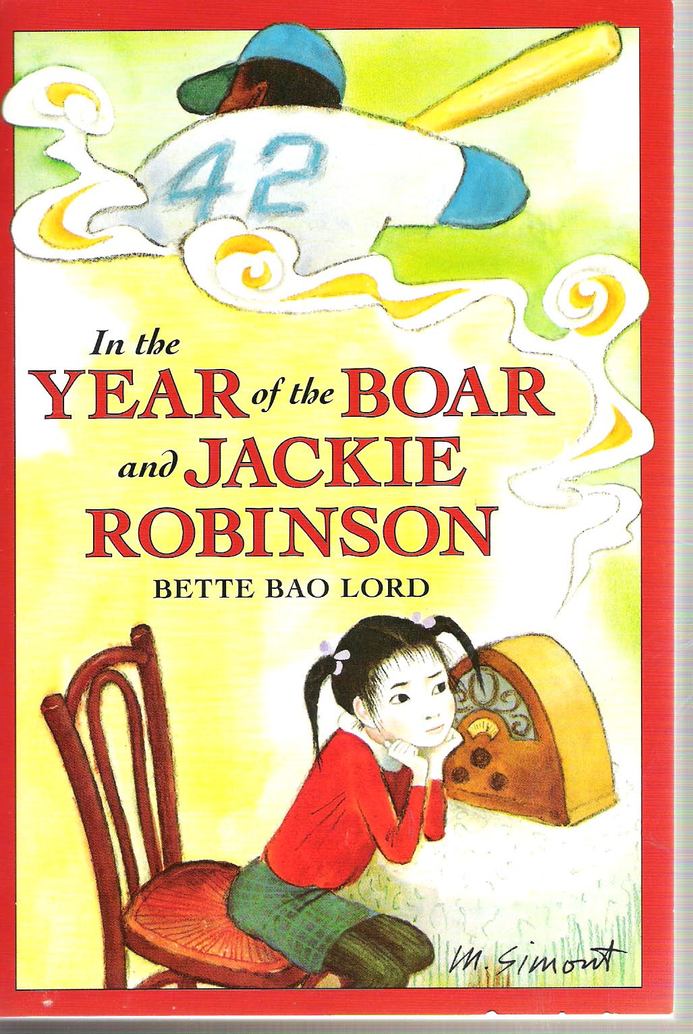Throughout the school year, students will be reading various genres within their level. We will utilize the "Ready Gen" reading series and students will also will be engaged in book clubs, partnerships, Author Studies, and much, much more. They will be studying various themes and topics and will be looking at them through many different books and perspectives. They will learn to critically analyze texts in order to form theories and opinions about the issues and concepts in the world around them. It is through reading that we will explore the concept of "learning how to live" and apply those lessons taught to the situations that surround our lives each day. Most importantly, students will learn strategies for finding evidence across many different levels and texts in order to formulate strong arguments for their opinions.
GIVING TREE ESSAY: DUE TUESDAY, MAY 10
| givingtreeessay.docx | |
| File Size: | 293 kb |
| File Type: | docx |
| the_giving_tree__1_.docx | |
| File Size: | 118 kb |
| File Type: | docx |
| givingtreeessayrubric.doc | |
| File Size: | 39 kb |
| File Type: | doc |
ALTERNATE TASK:
SOCIAL ISSUES: ANIMAL RIGHTS & PROTECTION-KIDS MAKING A DIFFERENCE
Some Reading Practices for Close Reading and Interpretation
We are not just reading for plot and character development…….
We are thinking more about the choices the author made, perspective and point of view, and the social issues characters face…..
Pay attention to the details and assume they are relevant and worth considering.
Essential Question:
How can we read to be alert to social issues, including striving to discern the issues that are hiding in texts and delve into perspective and point of view?
Goals for the unit:
We are not just reading for plot and character development…….
We are thinking more about the choices the author made, perspective and point of view, and the social issues characters face…..
Pay attention to the details and assume they are relevant and worth considering.
Essential Question:
How can we read to be alert to social issues, including striving to discern the issues that are hiding in texts and delve into perspective and point of view?
Goals for the unit:
- Analyze all social issues that are hiding in the text
- Read for perspective and point of view. Examine how perspective and point of view of the character affects your understanding of the social issues in the text.
- Read for pivotal moments and recognize character change and character struggles.
RESPONSE ONE-DUE TUESDAY, APRIL 19
Your browser does not support viewing this document. Click here to download the document.
Your browser does not support viewing this document. Click here to download the document.
SHARED WRITING FOR EXTENDED RESPONSE AND MORE HELP
| sharedwriting.docx | |
| File Size: | 162 kb |
| File Type: | docx |
|
FIRST PARAGRAPH: STATE THEME
SECOND PARAGRAPH: PROVIDE INFO-EVIDENCE FROM BOTH TEXTS THIRD PARAGRAPH: WHAT I LEARNED FROM BOTH TEXTS FINAL PARAGRAPH: WHAT I FELT ABOUT BOTH TEXTS |
GENDER ISSUES IN NOVELS: |
ROLE OF GENDER IN LITERATURE. HOW ARE MALE AND FEMALE CHARACTERS REPRESENTED?
Link: We began to discuss the whole idea of fairness and justice in the stories we are reading. We are working on developing empathy and compassion for our main characters. We discussed many important critical issues including are our characters being portrayed fairly and accurately as well as treating each other fairly. Today, we will specifically focus on the gender issue. In other words, how are male and female characters represented and are they being depicted or shown fairly and accurately?
Role of gender in literature. How are male and female characters portrayed/represented?
Link: Yesterday we began discussing the whole idea of fairness and justice in the stories we are reading. We discussed many important issues including if characters are portrayed fairly and accurately as well as treating each other fairly. Today we will focus specifically on the gender issue. In other words, how are male and female characters represented and are they being depicted or shown fairly and accurately?
Teach: Thinking about gender involves thinking about how male and female characters are represented. There are several elements for us to focus on:
Independent: Read your story-book club book with the critical lens of gender. ANSWER AS MANY OF THESE QUESTIONS AS POSSIBLE IN YOUR PARTNERSHIPS AFTER TRYING TO ANSWER THEM INDEPENDENTLY. Mark places where gender plays a role or any of the above issues come up. Write a response in your reader’s notebook. PREPARE AN EXIT SLIP.
Link: We began to discuss the whole idea of fairness and justice in the stories we are reading. We are working on developing empathy and compassion for our main characters. We discussed many important critical issues including are our characters being portrayed fairly and accurately as well as treating each other fairly. Today, we will specifically focus on the gender issue. In other words, how are male and female characters represented and are they being depicted or shown fairly and accurately?
Role of gender in literature. How are male and female characters portrayed/represented?
Link: Yesterday we began discussing the whole idea of fairness and justice in the stories we are reading. We discussed many important issues including if characters are portrayed fairly and accurately as well as treating each other fairly. Today we will focus specifically on the gender issue. In other words, how are male and female characters represented and are they being depicted or shown fairly and accurately?
Teach: Thinking about gender involves thinking about how male and female characters are represented. There are several elements for us to focus on:
- Looks: We need to think about who is looking and who is being looked at. Very often in television shows, commercials and films, females are set up as “pretty objects” to be looked at and admired by males. There is the stereotype that think, tall, great hair and great clothes equals a great person. These are the qualities that girls may aspire to or boys admire. Even in books without visual images, the author paints pictures in our minds about the main characters. We want to ask ourselves, what characteristics are used to describe the main character? How is the main character treated based on his or her looks/appearance? Pretty, ugly, thin, fact, hunchback, etc. How is he or she treated by others based on their looks?
- Strength: Male and female characters are often portrayed differently in terms of their strengths and vulnerability/sensitivity. It is not fair for females to always be vulnerable; it is not fair always for males to be strong. How strong is your main character? Is this trait admired by others in the story? Why or why not?
- Agency: Male characters are usually the ones who do things, have gumption, nerve, chutzpah, who make projects, have strong goals and accomplishments. Female characters often wait for other people to get them going or they respond to what males or adults are doing. Think about if the main character is encouraged to have strong goals and be strong willed and ambitious. Does this fit in with the role the male or female is supposed to have in society? Explain.
- Centrality: Male characters are often the ones whose actions are central to the story. Even when a girl is the main character, she may seem merely a substitute for a male stereotype—physically strong, action oriented or fantastically heroic (think of some of the Disney films—Pocohantas, Ariel, etc). Think about who is central to your story. Describe how the central character is being shown. What are some qualities/characteristics? Is your character allowed to be combinations of various qualities—for instance both strong and sensitive? If your character is female is she merely a flip of the usual stereotypical male hero?
- Conformity: Is the main character expected to conform to cultural/societal stereotypes? Or is he or she allowed to become an independent thinker and able to take action without being unfairly prejudged by others?
- Feminine/Masculine stereotypes: What are some typical feminine/masculine stereotypes valued in our society? How well does your character fit these stereotypes?
- How should males and females be valued in our society? Think of what role should gender play? What are important qualities/characteristics for both males and females? Is there a need for certain gender specific qualities?
Independent: Read your story-book club book with the critical lens of gender. ANSWER AS MANY OF THESE QUESTIONS AS POSSIBLE IN YOUR PARTNERSHIPS AFTER TRYING TO ANSWER THEM INDEPENDENTLY. Mark places where gender plays a role or any of the above issues come up. Write a response in your reader’s notebook. PREPARE AN EXIT SLIP.
EMPATHY POWERPOINT-CREATED JUST FOR YOU:
| empathy__1_.ppt | |
| File Size: | 2566 kb |
| File Type: | ppt |
WRITING BOOK REVIEWS FOR OUR ANIMAL ISSUES BOOK CLUB BOOKS: DUE TUESDAY, APRIL 19: http://teacher.scholastic.com/writewit/bookrev/index.htm
| bookreview_tips.pdf | |
| File Size: | 964 kb |
| File Type: | |
| bookreview_rubric.pdf | |
| File Size: | 58 kb |
| File Type: | |
| writing_strategies_for_persuasive_reviews.docx | |
| File Size: | 131 kb |
| File Type: | docx |
SOCIAL ISSUES BOOK CLUB PROMPTS:
Interpretation
Empathy
Personal Response
- What is this story really about? What is the author’s message or purpose for writing this book?
- Why do you think the author made this choice or wrote this part in this way?
- What social issues do I see in this book? What does this book say about the social issue?
- Why do you think the character did this or acted this way?
- How are characters’ interactions affected by the social issue and/or group membership?
- Does the character’s involvement in a group affect the way he or she is treated?
- Whose perspective is being told? Whose perspective is missing? Why?
- How might this story be different if told from the opposing point of view?
Empathy
- How do you think the character feels?
- What would you do or how would you feel if you were the character?
- Would you do things the same or differently as the character?
- Role play and imagine you are a character from the book, what would you say?
- How different are characters allowed to be? How do characters respond to those who are different?
- What groups have power? Is power distributed equally? Is this fair?
Personal Response
- Has something like this happened in your own life?
- Do we see this in the world around us?
- How is this book similar to my life? How is it different?
- Is this a fair or accurate depiction of how life really is?
- What do you like about this book? What do you dislike?
- Is this social issue still affecting people today?
- What groups are represented in this book? Am I a member of those groups? What groups do I belong to?
- What have I learned about this social issue by reading this book? What’s my big idea about this issue?
- How can I address this social issue in my own life?
BOOK CLUB EXIT SLIPS AND TWEET FORMS:
| bookclubexitslip.docx | |
| File Size: | 169 kb |
| File Type: | docx |
| tweetexit.docx | |
| File Size: | 108 kb |
| File Type: | docx |
SOCIAL ISSUES BOOK CLUB RUBRIC:
| social_issues_book_clubs_rubric.doc | |
| File Size: | 76 kb |
| File Type: | doc |
BOOK CLUB RUBRIC:
| bookclubrubric.pdf | |
| File Size: | 547 kb |
| File Type: | |
ANIMAL ISSUES BOOK CLUBS
| final_animal_issues_book_club_packet.docx | |
| File Size: | 15 kb |
| File Type: | docx |
| animal_issues_book_clubs_packet5.docx | |
| File Size: | 14 kb |
| File Type: | docx |
| animal_issues4.docx | |
| File Size: | 14 kb |
| File Type: | docx |
| animalissues3revised.docx | |
| File Size: | 18 kb |
| File Type: | docx |
| animalissuesbookclubsparttwo.docx | |
| File Size: | 19 kb |
| File Type: | docx |
| animalissuespreviewpartone__2_.docx | |
| File Size: | 23 kb |
| File Type: | docx |
SAMPLE ELA PRACTICE ESSAY: MOVING TOWARDS A LEVEL 4: WHAT IS STRONG? USE RUBRIC AND CHECKLIST
EXTENDED RESPONSE CHECKLIST:
| extended_response_checklist.docx | |
| File Size: | 15 kb |
| File Type: | docx |
SHORT ANSWER RESPONSE CHECKLIST & ANCHOR PAPERS:
| checklist_for_short_response.docx | |
| File Size: | 53 kb |
| File Type: | docx |
SAMPLE SWBST:
| swbstsample.docx | |
| File Size: | 74 kb |
| File Type: | docx |
POHL'S THINK TO LEARN QUESTION STEMS:
| pohlrevised_blooms_questiions.doc | |
| File Size: | 31 kb |
| File Type: | doc |
SUMMARIZING NON FICTION TEXTS:
THE REPORTER'S FORMULA FOR SUMMARIZING:
SUMMING IT UP:
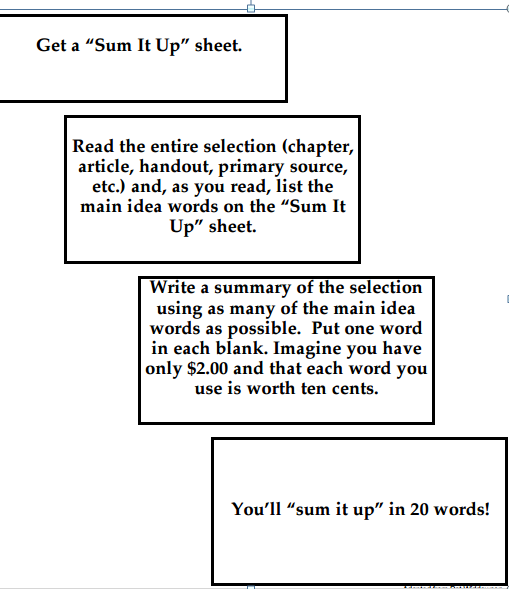
JUST SUBSTITUTE $2.00 FOR $4.00 AND SUM IT UP IN ABOUT 40 WORDS.
Your browser does not support viewing this document. Click here to download the document.
FLINT MICHIGAN ARTICLE-IMPORTANT VS. INTERESTING DETAILS:
| flintwaterarticle.docx | |
| File Size: | 101 kb |
| File Type: | docx |
NON-FICTION TEXT STRUCTURES :
Your browser does not support viewing this document. Click here to download the document.
| nonfictiontextstructures.pdf | |
| File Size: | 285 kb |
| File Type: | |
Your browser does not support viewing this document. Click here to download the document.
Your browser does not support viewing this document. Click here to download the document.
Your browser does not support viewing this document. Click here to download the document.
COMPARATIVE OPINION ESSAY FOR ALMOST HOME & FAMILY UNDER THE BRIDGE-DUE THURSDAY, FEBRUARY 11
| compareandcontrastgraphicorganizer.pdf | |
| File Size: | 287 kb |
| File Type: | |
Your browser does not support viewing this document. Click here to download the document.
YOU ARE GOING TO WRITE A FIVE PARAGRAPH (OR SIX IF YOU CHOOSE TO INCLUDE A SPECIAL INTRODUCTION) WHERE YOU COMPARE AND CONTRAST THE PORTRAYAL OF FAMILIES IMPACTED BY POVERTY & HOMELESSNESS IN ALMOST HOME & THE FAMILY UNDER THE BRIDGE. OR YOU MAY COMPARE ALMOST HOME TO ANOTHER TEXT WE SHARED IN CLASS (FLY AWAY HOME OR SHELTER IN THEIR CAR). IN YOUR ESSAY, YOU WILL EXPLAIN WHICH TEXT YOU THINK DOES A BETTER JOB OF CONVEYING-EXPRESSING HOMELESSNESS TO THE READER.
You will:
You will:
- Introduce a topic and state an opinion on why this is an important issue
- Compare similarities and differences
- Use specific evidence from both tests to support your main ideas.
- Write a conclusion that summarizes your opinion
- Develop the topics with facts, definitions, concrete details, quotations or other information and examples related to the topic
- Link ideas within categories of information using words and phrases (ex: for instance, in order to, in addition)
- Provide a concluding statement or section related to the opinions presented
- YOU MAY INCLUDE THE FOLLOWING ELEMENTS FROM THE COMPARATIVE ESSAY THAT YOU ALREADY DID (BUT KEEP IN MIND THAT IN THIS ESSAY YOU WILL HAVE TO ADDRESS DIFFERENCES, TOO!
- FIRST PARAGRAPH (OPTIONAL) DISCUSSES WHAT IT MEANS TO HAVE A HOME WITH A SPECIAL QUOTE THAT RELATES TO YOUR IDEAS. SAMPLE: Author Maya Angelou once said, “The ache for home lives in all of us, the safe place where we can go as we are and not be questioned.” We are all products of where we began and where our roots are firmly planted. Home is not merely a place; it is a feeling. It is where we are comfortable. It is where we dream, scheme and build the foundation of our future. That “homey” feeling may not always be warm and fuzzy like a favorite pair of worn out slippers. But it is the place that shapes us, gives us direction as we set forth on the walk down the road of life. So what happens to those of us who do not have a “real” home?
- FIRST PARAGRAPH (REGULAR OR SECOND WITH SPECIAL INTRO): INTRODUCE BOTH STORIES-TEXTS DISCUSS HOW THEY ARE SIMILAR AND WHAT IMPORTANT THEME(S)-MESSAGE(S) THEY SHARE.
- CONCLUSION. SUM UP WHAT BOTH STORIES TEACH US AND WHY THEY ARE IMPORTANT. ***Include an important difference and re-state your opinion as to which text does a better job of conveying-expressing poverty and-or homelessness.
REVIEW: DIFFERENT TYPES OF FIGURATIVE LANGUAGE. MAKE SURE YOU HAVE A COPY OF THIS IN YOUR NOTEBOOK
| fireworkactivity.pdf | |
| File Size: | 275 kb |
| File Type: | |
Your browser does not support viewing this document. Click here to download the document.
| figlanguagereview.pdf | |
| File Size: | 274 kb |
| File Type: | |
Your browser does not support viewing this document. Click here to download the document.
CORNELL NOTES: USE FOR SOCRATIC SEMINARS AND TO TAKE NOTES FROM VIDEOS AND OTHER DISCUSSIONS
PLEASE NOTE, THE FOLLOWING IS A READY MADE POWERPOINT AND NO DISRESPECT IS MEANT FROM YOUR TEACHER TO THOSE FOLKS WHO WORK IN THE SERVICE INDUSTRY. I THINK IT IS VERY HELPFUL TO GUIDE YOU IN IDENTIFYING IMPORTANT IDEAS. SO REVIEW.
| cornell_note_taking.ppt | |
| File Size: | 1415 kb |
| File Type: | ppt |
| cornellnotestemplate2.pdf | |
| File Size: | 141 kb |
| File Type: | |
| cornelltemplate.docx | |
| File Size: | 103 kb |
| File Type: | docx |
Your browser does not support viewing this document. Click here to download the document.
BULLY RESPONSES:
- At the end of the book, Lyla asks the reader, "What would you do?" Respond thoughtfully in two paragraphs that each have at least four sentences.
- CHARACTERS' NAMES: LYLA, JAMIE AND THE COOL GIRLS: GAGE, MAEVE AND KENYON
- There are several TYPES of conflict. Identify them and tell which one you think is most important and why.
- What is the theme of this story? Give at least two supporting details to support it.
- Please write a double sided entry (two pages) in response to this story. You may make text to text, text to world and text to self connections but please explain your connections with specific details.
- Complete one of the following forms:
SUMMARIZING: WE MUST IDENTIFY THEME (FICTION) MAIN IDEA (NON FICTION) WITH IMPORTANT SUPPORTING DETAILS http://mrswarnerarlington.weebly.com/summarize.html
| important_ideas_in_birchbark.docx | |
| File Size: | 152 kb |
| File Type: | docx |
SCHOOL OF ROCK THEME WITH SUPPORTING, RELEVANT DETAILS:
| stick_it_to_the_man-themeinschoolofrock.docx | |
| File Size: | 146 kb |
| File Type: | docx |
TONE VS. MOOD IN A FICTIONAL TEXT: THINK ABOUT HOW THE MOOD OF THE STORY CHANGES FROM ONE SECTION TO THE NEXT OR FROM BEGINNING TO END...IT'S ANOTHER LENS WHEN COMPARING AND CONTRASTING.
HOW WOULD YOU DESCRIBE THE MOOD OF THE STORY IN THE SUMMER SECTION OF THE BIRCHBARK HOUSE?
WHY DO YOU SAY THIS?
HOW WOULD YOU CONTRAST THE MOOD OF THE BIRCHBARK HOUSE TO THE WINTER SECTION OF THE STORY? WHY?
(REMEMBERING: MOOD IS HOW SOMETHING MAKES YOU THE READER FEEL)!
WHY DO YOU SAY THIS?
HOW WOULD YOU CONTRAST THE MOOD OF THE BIRCHBARK HOUSE TO THE WINTER SECTION OF THE STORY? WHY?
(REMEMBERING: MOOD IS HOW SOMETHING MAKES YOU THE READER FEEL)!
COMPARING AND CONTRASTING IN FICTIONAL TEXTS:
ELEMENTS WE COMPARE AND CONTRAST INSIDE A FICTIONAL TEXT:
- CHARACTER TRAITS
- ACTIONS-BEHAVIOR OF DIFF CHARACTERS AND DIFF GROUPS OF PEOPLE
- RELATIONSHIPS
- CHARACTER’S RESPONSES TO SITUATIONS
- RESPONSES TO EVENTS
- DIFFERENT BELIEFS-TRADITIONS OF DIFFERENT GROUPS
- CHARACTER’S FEELINGS
- CHARACTERS’ THOUGHTS
- SETTING
- CHARACTER’S LIFESTYLES
- DIFFERENT GOALS
- WANTS-NEEDS
- CHANGE-TRANSFORMATION
SOCIAL ISSUES:
SOCIAL ISSUE-A PROBLEM-CONDITION-SITUATION THAT OCCURS IN SOCIETY OR IMPACTS A GROUP OF PEOPLE INVOLVES THE WAY WE RELATE AND INTERACT WITH OTHERS
- CYBER BULLYING
- HOMELESSNESS
- ABANDONED-HOMELESS ANIMALS
- POLITICIANS WHO “MUDSLING” AND SAY HATEFUL THINGS AGAINST CERTAIN GROUPS
- PREJUDICE
- TERRORISM
- VIOLENT VIDEO GAMES
- DRUGS
- ALCOHOLISM
- SMOKING
- INTERNET SAFETY
- BULLYING
- PEER PRESSURE
- ACCESS TO AFFORDABLE HEALTH CARE
- LITERACY
- POVERTY
- Bullying
- Fitting In/Being New
- Friendship Issues
- Growing Up
- Homelessness
- Poverty
- Divorce/Family Issues
- Racism/Discrimination
- Peer Pressure
- Death/Dying
- Building Community
SOCIAL ISSUES PROMPTS:
Interpretation
Empathy
Personal Response
- What is this story really about? What is the author’s message or purpose for writing this book?
- Why do you think the author made this choice or wrote this part in this way?
- What social issues do I see in this book? What does this book say about the social issue?
- Why do you think the character did this or acted this way?
- How are characters’ interactions affected by the social issue and/or group membership?
- Does the character’s involvement in a group affect the way he or she is treated?
- Whose perspective is being told? Whose perspective is missing? Why?
- How might this story be different if told from the opposing point of view?
Empathy
- How do you think the character feels?
- What would you do or how would you feel if you were the character?
- Would you do things the same or differently as the character?
- Role play and imagine you are a character from the book, what would you say?
- How different are characters allowed to be? How do characters respond to those who are different?
- What groups have power? Is power distributed equally? Is this fair?
Personal Response
- Has something like this happened in your own life?
- Do we see this in the world around us?
- How is this book similar to my life? How is it different?
- Is this a fair or accurate depiction of how life really is?
- What do you like about this book? What do you dislike?
- Is this social issue still affecting people today?
- What groups are represented in this book? Am I a member of those groups? What groups do I belong to?
- What have I learned about this social issue by reading this book? What’s my big idea about this issue?
- How can I address this social issue in my own life?
SOCIAL ISSUES REAL LIFE BRAINSTORMING TABLE:
| issuesinalmosthome.docx | |
| File Size: | 77 kb |
| File Type: | docx |
SOCIAL ISSUES: GROUPS
| socialissuesgroups.doc | |
| File Size: | 29 kb |
| File Type: | doc |
Your browser does not support viewing this document. Click here to download the document.
MENTOR TEXT: SMOKY NIGHT BY EVE BUNTING:
| smoky_night.pdf | |
| File Size: | 79 kb |
| File Type: | |
Your browser does not support viewing this document. Click here to download the document.
Your browser does not support viewing this document. Click here to download the document.
FAIRNESS:
| fairnesssocialissues.doc | |
| File Size: | 26 kb |
| File Type: | doc |
WHAT WE ARE LEARNING ABOUT SOCIAL ISSUES SO FAR IN ALMOST HOME-TO BE CONTINUED...
WHAT WE ARE LEARNING ABOUT HOMELESSNESS & OTHER SOCIAL ISSUES IN “ALMOST HOME”-TO BE CONTINUED
| homelessnesstable.docx | |
| File Size: | 115 kb |
| File Type: | docx |
ALMOST HOME-DUE FRIDAY, JANUARY 22:
CHAPTERS 28-36—DUE FRIDAY: IN ADDITION TO THESE QUESTIONS, PLEASE ANSWER THE RESPONSE PROMPT ABOVE THE QUESTIONS:
- How were Sugar’s and Joonie’s dads alike?
- Why did Lexie say that going to the ER with a 104 fever was the best thing that could have happened to her?
- How did painting the walls influence Sugar?
- How did Sugar feel about leaving Mac and Lexie and going to live with Reba and Mr. Leeland?
- What happened five days after Mr. Leeland showed up in Chicago?
- What is the mood of Sugar’s poem at the end of Chapter 36? Why?
- Character Perspective Now that you have identified some of the social issues in your book, think about how the characters deal with and react to these issues. Think deeply about them and then respond to the following questions. Make sure to use evidence from your text and explain why! What are the different characters’ reactions to these issues? Are their reactions similar to one another or different?
- If the characters’ reactions are different, what explains the difference? Be specific.
- Come up with your own high order thinking question and jot your ideas down.
INTRO TO SOCIAL ISSUES: FAIRNESS
Your browser does not support viewing this document. Click here to download the document.
Your browser does not support viewing this document. Click here to download the document.
Your browser does not support viewing this document. Click here to download the document.
SOCRATIC SEMINAR PRESENTATION:
Your browser does not support viewing this document. Click here to download the document.
| socraticseminar4315.pptx | |
| File Size: | 839 kb |
| File Type: | pptx |
SOCRATIC SEMINAR RUBRIC:
| ssanalyticrubric.doc | |
| File Size: | 26 kb |
| File Type: | doc |
Your browser does not support viewing this document. Click here to download the document.
SOCRATIC SEMINAR RESPONSE FORMS: (USE ONE OR THE OTHER FOR EACH SEMINAR):
| socraticseminarduring.docx | |
| File Size: | 39 kb |
| File Type: | docx |
Your browser does not support viewing this document. Click here to download the document.
| socratic_seminar_reflection.doc | |
| File Size: | 31 kb |
| File Type: | doc |
| socraticreflection2.docx | |
| File Size: | 743 kb |
| File Type: | docx |
Your browser does not support viewing this document. Click here to download the document.
AUTHOR'S PURPOSE OF HISTORICAL FICTION VS. HISTORY: History and historical fiction are necessarily not the same thing. The purpose of history is to narrate events as accurately as one can. The purpose of historical fiction is to enable a reader through the perspective of characters in the story to feel that she or he is present at the events. THEREFORE, EVEN THOUGH IT MAY CONTAIN FACTS ITS MAIN PURPOSE IS TO ENTERTAIN
The author of historical fiction must blend historical facts with imagination and creative style to master his art. They must also be a master of the past so as to portray accurately ideas, attitudes, tendencies, and themes and interlace his story—accurate in all its details—into the thematic materials.
It is no easy task, then, for an author to undertake the writing this challenging and tricky genre. Any writer who tells a story set in the past must traverse the fine line between history and fiction, between readers contemporary sensibilities and historical accuracy.
In this particular genre, the plot is drawn from the writer's imagination but is true to life in some period of the past. The setting is always usually the most important literary ingredient. Because the author is writing about a particular time in history, the information about the time period must be accurate, authentic, or both. To create accurate and authentic settings in their books, authors must research the time period thoroughly. They must know how people lived, what they ate, what kinds of homes they had, and what artifacts were a common part of their lives. This must be used with caution though, if the aim of the novel becomes primarily a vehicle for delivering facts about the past, the story is likely to become over-involved in detail and compromise its artistic honesty and its appeal. An Author must be wary of getting so lost among their research that they forgo working on the story. Story should always come first. http://www.readwritethink.org/files/resources/lesson_images/lesson404/HistoricalFictionDefn.pdf
It is no easy task, then, for an author to undertake the writing this challenging and tricky genre. Any writer who tells a story set in the past must traverse the fine line between history and fiction, between readers contemporary sensibilities and historical accuracy.
In this particular genre, the plot is drawn from the writer's imagination but is true to life in some period of the past. The setting is always usually the most important literary ingredient. Because the author is writing about a particular time in history, the information about the time period must be accurate, authentic, or both. To create accurate and authentic settings in their books, authors must research the time period thoroughly. They must know how people lived, what they ate, what kinds of homes they had, and what artifacts were a common part of their lives. This must be used with caution though, if the aim of the novel becomes primarily a vehicle for delivering facts about the past, the story is likely to become over-involved in detail and compromise its artistic honesty and its appeal. An Author must be wary of getting so lost among their research that they forgo working on the story. Story should always come first. http://www.readwritethink.org/files/resources/lesson_images/lesson404/HistoricalFictionDefn.pdf
LINK TO BIRCHBARK HOUSE INTERNET ACTIVITY:
ANSWER ALL OF THE FOLLOWING QUESTIONS BY TUESDAY, JANUARY 19: (TRY TO DO ONE OR TWO EACH NIGHT):
Ojibwa, Anishinabe, Chippewa Webquest
Type in the following web address
http://nativeamericans.mrdonn.org/index.html
Under North America click on Northeast Woodland and then click on Ojibwa/Chippewa in Olden Times
Click on What did the Ojibwa/Chippewa eat?
Click the back button and click on and read How did the Ojibwa/Chippewa live?
9.Why were canoes so important to the Ojibwa culture?
Click the back button and click on and read about Wigwams
10.Describe what a wigwam looked like?
11.How is a wigwam different from a tepee?
Click the back button and click on and read about The Arrow Maker
12. Why did the Ojibwa mark their arrows?
Click the back button and click on and read about Picture Messages
13. Why were pictographs so important to the Ojibwa?
Click the back button and click on and read about Night Messages
14.What were night messages? How did they enforce good behavior?
Click the back button and click on and read about Ojibwa Kids
15.Why were Ojibwa children taught to be still and quiet?
16.What did charcoal sad faces mean?
Click the back button and click on and read about Religion
17.What did the Ojibwa believe about spirits?
18.Could songs be medicine?
Click the back button and click on and read about Dream Catchers
19. What were dream catchers designed to do?
20. How did bad dreams disappear?
PLEASE CHOOSE ONE OF THE FOLLOWING WRITING ACTIVITIES TO COMPLETE BY TUESDAY, JANUARY 19:Legends:
Read the Ojibway Legend: Winabojo and the Birch Tree.
Read this tale of the Dreamcatcher.
Write a legend about Omakayas and the bears.
More Writing activities:
Write a biography of one of the characters Use the resources at Biography Maker
Write a condolence letter to Omakayas. Advice on writing a condolence letter
Compare & contrast A Traditional Ojibway Wigwam with your home - Worksheet
Write a review of the book. | Make a Story Timeline - ReadWriteThink - Timeline generator
Think about characters - Make a set of Character Trading Cards. - Planning sheet
Ojibwa, Anishinabe, Chippewa Webquest
Type in the following web address
http://nativeamericans.mrdonn.org/index.html
Under North America click on Northeast Woodland and then click on Ojibwa/Chippewa in Olden Times
Click on What did the Ojibwa/Chippewa eat?
- What type of food items did the Ojibwa add maple syrup to?
- What was the main season for fishing? How did the Ojibwa let people know not to overfish an area?
- Why was rice an important food to the Ojibwa?
- What types of animals did the Ojibwa hunt?
Click the back button and click on and read How did the Ojibwa/Chippewa live?
- What did the Ojibwa call families?
- How were Ojibwa people given names?
- Who were young couples suppose to live with after getting married?
- Explain some of the important manners for Ojibwa children.
9.Why were canoes so important to the Ojibwa culture?
Click the back button and click on and read about Wigwams
10.Describe what a wigwam looked like?
11.How is a wigwam different from a tepee?
Click the back button and click on and read about The Arrow Maker
12. Why did the Ojibwa mark their arrows?
Click the back button and click on and read about Picture Messages
13. Why were pictographs so important to the Ojibwa?
Click the back button and click on and read about Night Messages
14.What were night messages? How did they enforce good behavior?
Click the back button and click on and read about Ojibwa Kids
15.Why were Ojibwa children taught to be still and quiet?
16.What did charcoal sad faces mean?
Click the back button and click on and read about Religion
17.What did the Ojibwa believe about spirits?
18.Could songs be medicine?
Click the back button and click on and read about Dream Catchers
19. What were dream catchers designed to do?
20. How did bad dreams disappear?
PLEASE CHOOSE ONE OF THE FOLLOWING WRITING ACTIVITIES TO COMPLETE BY TUESDAY, JANUARY 19:Legends:
Read the Ojibway Legend: Winabojo and the Birch Tree.
Read this tale of the Dreamcatcher.
Write a legend about Omakayas and the bears.
More Writing activities:
Write a biography of one of the characters Use the resources at Biography Maker
Write a condolence letter to Omakayas. Advice on writing a condolence letter
Compare & contrast A Traditional Ojibway Wigwam with your home - Worksheet
Write a review of the book. | Make a Story Timeline - ReadWriteThink - Timeline generator
Think about characters - Make a set of Character Trading Cards. - Planning sheet
http://www.mrsoshouse.com/ext/birch.htmlCHARACTER GRAPHIC ORGANIZER: USE FOR BIRCHBARK HOUSE AND OTHER STORIES:
SIX PILLARS OF CHARACTER: https://charactercounts.org/sixpillars.html
ALTERNATIVE OUTLINE:
| outline_for_comparing_and_contrasting_a_family_under_the_bridge_and.htm | |
| File Size: | 25 kb |
| File Type: | htm |
COMPARATIVE ESSAY: HOMELESSNESS
YOU ARE GOING TO WRITE A FIVE PARAGRAPH (OR SIX IF YOU CHOOSE TO INCLUDE A SPECIAL INTRODUCTION) WHERE YOU COMPARE AND CONTRAST THE FAMILY UNDER THE BRIDGE TO ANOTHER TEXT YOU READ ABOUT POVERTY AND HOMELESSNESS.
- FIRST PARAGRAPH (OPTIONAL) DISCUSSES WHAT IT MEANS TO HAVE A HOME WITH A SPECIAL QUOTE THAT RELATES TO YOUR IDEAS. SAMPLE: Author Maya Angelou once said, “The ache for home lives in all of us, the safe place where we can go as we are and not be questioned.” We are all products of where we began and where our roots are firmly planted. Home is not merely a place; it is a feeling. It is where we are comfortable. It is where we dream, scheme and build the foundation of our future. That “homey” feeling may not always be warm and fuzzy like a favorite pair of worn out slippers. But it is the place that shapes us, gives us direction as we set forth on the walk down the road of life. So what happens to those of us who do not have a “real” home?
- FIRST PARAGRAPH (REGULAR OR SECOND WITH SPECIAL INTRO): INTRODUCE BOTH STORIES-TEXTS DISCUSS HOW THEY ARE SIMILAR AND WHAT IMPORTANT THEME(S)-MESSAGE(S) THEY SHARE.
- SECOND (OR THIRD PARAGRAPH) EXPLORES AN IMPORTANT SIMILARITY WITH SPECIFIC EVIDENCE. Try to add insight that tells us why you think the author included the scene-information-text-based evidence.
- THIRD (OR FOURTH PARAGRAPH) ANOTHER IMPORTANT COMPARISON BETWEEN THE TWO TEXTS WITH SPECIFIC EVIDENCE. Try to add your own smart thinking.
- FOURTH (OR FIFTH PARAGRAPH); THIS SHOULD BE THE MOST IMPORTANT SIMILARITY. WE CALL THIS THE "KNOCK 'EM SOCK 'EM PARAGRAPH. IMPRESS US WITH YOUR EVIDENCE AND ADD YOUR INSIGHT.
- FIFTH (OR SIXTH PARAGRAPH): CONCLUSION. SUM UP WHAT BOTH STORIES TEACH US AND WHY THEY ARE IMPORTANT. ***Include an important difference-contrast (with text based evidence from both stories-texts). Also add on your own thinking-insight about what you the reader learned.
CONFLICT IN STORIES:
Your browser does not support viewing this document. Click here to download the document.
ANIMAL ISSUES BOOK CLUBS:
PREVIEW AND PART ONE: DUE WEDNESDAY, NOVEMBER 25:
FAMILY UNDER THE BRIDGE READ CHAPTER ONE
WATCH VIDEO: https://www.youtube.com/watch?v=d0QLsz_5SM0
WATCH VIDEO: https://www.youtube.com/watch?v=d0QLsz_5SM0
- DEFINE THE FOLLOWING WORDS AND IDENTIFY THE CORRECT PARTS OF SPEECH:
- HOBO
- GENEROSITY
- LOITER
- NICHE
- FRAGILE
- QUAY
- URCHIN
- What is Armand’s attitude towards children? How do you know?
- What does Armand’s statement, “pride and life under the bridge weren’t going to work out well together” mean?
- Why would the Parisians have stopped ringing bells in the market place at the close of day to announce to the homeless that they were welcome to the leftovers?
- Why does Armand move from one place to another? How does he feel about his living conditions?
- How important is the setting (time and place) to the story? Why is it important?
- Pretend you are Armand and write a diary entry recording thr events of the December morning described in chapter one. Express your feelings and hopes towards the future. (at least 5-7 sentences)
- Come up with your own high order thinking question. Jot down your thinking.
POPULAR THEMES IN STORIES:
|
| ||||||||||||
READING RESPONSE RUBRIC: WE WILL USE THIS AS A SELF ASSESSMENT AND TEACHER ASSESSMENT TOOL: KEEP IN READING NOTEBOOK
Your browser does not support viewing this document. Click here to download the document.
| reading_response_rubric4315.doc | |
| File Size: | 33 kb |
| File Type: | doc |
WAYS TO KEEP THE BOOK TALK CONVERSATION GOING:
| bookclubhandout.doc | |
| File Size: | 24 kb |
| File Type: | doc |
BOOK CLUB RUBRIC:
| bookclubrubric.docx | |
| File Size: | 14 kb |
| File Type: | docx |
Your browser does not support viewing this document. Click here to download the document.
OUR THINK TO LEARN SCAFFOLDED QUESTIONS FOR FLY AWAY HOME:
EVALUATING: WHAT IS THEME OF THE STORY? WHAT SECTION REVEALS IT? WHAT SYMBOL IN THE STORY HELPS REVEAL THE THEME? EXPLAIN.
| flyawayhomeourscaffoldedquestions.doc | |
| File Size: | 54 kb |
| File Type: | doc |
POHL'S THINK TO LEARN SCAFFOLDED QUESTIONS:
|
Your browser does not support viewing this document. Click here to download the document.
NO HOME AND FLY AWAY HOME: |
| ||||||
BOOK PARTNER CHECKLIST:
| book_partnership_checklist.docx | |
| File Size: | 69 kb |
| File Type: | docx |
PURPOSE OF BOOK CHATS-USING I CAN STATEMENTS:
I can contribute to a good book club discussion.
(a) I can stay on topic when I talk.
(b) I can share my feelings and ideas.
(c) I can respect others’ ideas and opinions.
(d) I can build on others’ ideas.
(e) I can bring others into the discussion.
(a) I can stay on topic when I talk.
(b) I can share my feelings and ideas.
(c) I can respect others’ ideas and opinions.
(d) I can build on others’ ideas.
(e) I can bring others into the discussion.
BOOK PARTNERSHIPS:
| book_partnership_checklist.docx | |
| File Size: | 69 kb |
| File Type: | docx |
THICK VS. THIN QUESTIONS:
Your browser does not support viewing this document. Click here to download the document.
BOOK PARTNERSHIP PROMPTS: USE THESE IN YOUR CONVERSAITONS
|
Your browser does not support viewing this document. Click here to download the document.
|
| ||||||
THINK, PAIR, SHARE:
Your browser does not support viewing this document. Click here to download the document.
We are going to move in the direction where we are able to formulate our order thinking questions. But for now, we will use these questions-sentence starters to help us have a meaningful book chat. So let’s say, we are going to talk about important changes in the story. I would write that in the issue-question-topic category. Then I can state my opinion..jot it down. My partner states their opinion—jots it down. We then have to decide what we will share as a partnership. It should be something meaningful. So let me model for you with Alex:
SENTENCE-STORY STARTERS-Choose any one of the following. Complete.
SENTENCE-STORY STARTERS-Choose any one of the following. Complete.
- How are you similar and different to Shirley? (Try not to state the obvious—like gender).
- Are the characters in the story realistic? Be specific.
- Which character did you like the most? The least? Why.
- Who would enjoy reading this story? Why?
- What questions would you like to ask the author of this book? Why?
- What part of the story wasn’t fair? Explain.
- Explain a part that you would have liked to have changed and why.
- What is something you wonder about the characters or what might happen next to the main characters?
- What was the most valuable lesson Shirley learned? Explain.
CHANGING AND RE-ARRANGING:
"THERE'S NOTHING QUITE AS SURE AS CHANGE..."
When you are through changing, you are through.
Bruce Barton
There is not much point in writing a novel unless you can show the possibility of moral transformation, or an increase in wisdom, operating in your chief character or characters." –Anthony Burgess
READ MORE GREAT CHANGE QUOTES HERE: http://www.brainyquote.com/quotes/topics/topic_change2.html#6l7BE8w1a6V0L0AQ.99
When you are through changing, you are through.
Bruce Barton
There is not much point in writing a novel unless you can show the possibility of moral transformation, or an increase in wisdom, operating in your chief character or characters." –Anthony Burgess
READ MORE GREAT CHANGE QUOTES HERE: http://www.brainyquote.com/quotes/topics/topic_change2.html#6l7BE8w1a6V0L0AQ.99
CHANGE RUBRIC:
| changerubric.doc | |
| File Size: | 30 kb |
| File Type: | doc |
QUESTIONS FOR REFLECTION AND TO ASSESS OUR LEARNING ABOUT CHANGE:
- Describe what the main character was like at the beginning of the story.
- Describe what the main character was like at the end of the story.
- How did the main character change?
- Why do you think he or she changed in that way?
- How has understanding character change helped you to become a better reader?
INFORMATIONAL TEXT FEATURES:
QUESTION FOR REFLECTION-SKELETONS-PAGES 6-10:
- What do you think is the most important part of the human skeleton? Use details from the text to support your answer.
- What was this chapter mostly about? (It's most about....I know this because in the text it says...)
- What question do you still have after reading this chapter?
BOOK RECOMMENDATION: DUE MONDAY SEPTEMBER 28:
BOOK RECOMMENDATION
DUE MONDAY, SEPTEMBER 28TH
Incorporating the following points, prepare a two to three paragraph book recommendation in which you include the following
Sample Book Recommendation:
For all of you girls who thought you were alone in experiencing the aches and pains of growing up, should check out Are You There God, It’s Me Margaret by Judy Blume. It is the type of book you would want to read over and over again because we can all relate to the experiences that the author describes about trying to make new friends, and deal with the different changes we all go through.
Judy Blume usually writes about the trials and tribulations of being a kid. Who could ever forget the misadventures of Peter and his annoying little brother Fudge in Tales of a Fourth Grade Nothing and all of the Fudge sequels? Her books have covered topics ranging from divorce, bullying, annoying siblings, peer pressure and childhood obesity. She usually writes in a voice that sounds like that of an adolescent or pre-adolescent.
This novel is not different from her other ones. In Are You There God, It’s Me Margaret, the main character struggles with fitting in with the other kids in her new school in New Jersey. She yearns to be popular. Margaret also is confused about religion since one parent is Jewish and the other is Catholic. Her body and emotions are going through many changes that all young people can relate to experiencing.
So if you want to check out a funny book that can help you realize that you are not alone in this tough game we all play called, Life, check out Are You There God, It’s Me Margaret..
DUE MONDAY, SEPTEMBER 28TH
Incorporating the following points, prepare a two to three paragraph book recommendation in which you include the following
- Give a brief overview of the story’s plot (but do not give away the ending!)
- Describe the main character (Tell what he or she is like. Try to use adjectives and give examples of why your character is a certain type of person).
- Make a text to text connection (Tell how this story is similar to another book or how the main character is similar to a character in another story you have read or a movie you have watched).
- Make a text to self connection (Tell how the story relates to a similar experience you have had. Or simply state why you enjoyed the story. Don’t just say it is interesting. Say something like, “I really related to the main character because his parents are getting a divorce just like me and it is tough for both of us!”)
- Describe the author’s purpose in writing this story (This may require a bit of research. For instance, we know that Roald Dahl writes a lot about good little boys and girls triumphing over evil grown ups or step parents. That is because he grew up in an orphanage. Do a little investigation on your own).
- Describe the main conflict/problem. (But don’t give away the solution!)
- Tell why someone should read the book (For instance, “I think all girls should read the book, Are You There God, It’s Me Margaret? to see that we all experience aches and pains while growing up. It is definitely the book girls would read over and over again because they can all relate to the main character’s experiences of having trouble making friends and understanding the changes she is going through. We all may enjoy this funny tale about the difficulties of fitting in.”)
- Most importantly, what is the theme, message, big idea or life lesson that this story teaches its audience? (For instance, Tales of a Fourth Grade Nothing features funny incidents of what happens between Peter and his annoying little brother Fudge. But the life lesson is that even though a sibling can be annoying, we still love him or her! That would be true of the Ramona series too!
- Add a cover and-or image to your work.
- Use the reading response rubric to guide you
Sample Book Recommendation:
For all of you girls who thought you were alone in experiencing the aches and pains of growing up, should check out Are You There God, It’s Me Margaret by Judy Blume. It is the type of book you would want to read over and over again because we can all relate to the experiences that the author describes about trying to make new friends, and deal with the different changes we all go through.
Judy Blume usually writes about the trials and tribulations of being a kid. Who could ever forget the misadventures of Peter and his annoying little brother Fudge in Tales of a Fourth Grade Nothing and all of the Fudge sequels? Her books have covered topics ranging from divorce, bullying, annoying siblings, peer pressure and childhood obesity. She usually writes in a voice that sounds like that of an adolescent or pre-adolescent.
This novel is not different from her other ones. In Are You There God, It’s Me Margaret, the main character struggles with fitting in with the other kids in her new school in New Jersey. She yearns to be popular. Margaret also is confused about religion since one parent is Jewish and the other is Catholic. Her body and emotions are going through many changes that all young people can relate to experiencing.
So if you want to check out a funny book that can help you realize that you are not alone in this tough game we all play called, Life, check out Are You There God, It’s Me Margaret..
REVIEW OF DIFFERENT TYPES OF FIGURATIVE LANGUAGE:
Your browser does not support viewing this document. Click here to download the document.
AUTHOR'S TOOLBOX:
Your browser does not support viewing this document. Click here to download the document.
LINK TO INFOGRAPHIC: http://media.creativebloq.futurecdn.net/sites/creativebloq.com/files/images/2013/10/superbig.jpg
http://www.timeforkids.com/files/Elephants%20Never%20Forget.pdf
http://www.timeforkids.com/node/86631/print
http://www.ducksters.com/animals/elephant.php
http://kids.nationalgeographic.com/animals/african-elephant/#african-elephant-mud-family-baby.jpg
http://www.earthskids.com/ek-elephants.aspx
http://kids.nationalgeographic.com/explore/nature/angels-help-elephants/#kids-help-elephants-shute.jpg
http://www.timeforkids.com/node/86631/print
http://www.ducksters.com/animals/elephant.php
http://kids.nationalgeographic.com/animals/african-elephant/#african-elephant-mud-family-baby.jpg
http://www.earthskids.com/ek-elephants.aspx
http://kids.nationalgeographic.com/explore/nature/angels-help-elephants/#kids-help-elephants-shute.jpg
LINK TO ELEPHANT VIDEO: https://vimeo.com/23640203
SAMPLE RESPONSE:
| jackierobinsonnumberonesample.docx | |
| File Size: | 142 kb |
| File Type: | docx |
IN THE YEAR OF THE BOAR AND JACKIE ROBINSON PART FIVE: DUE MONDAY, OCTOBER 5
DEFINE
DEFINE THE FOLLOWING WORDS AND IDENTIFY THE CORRECT PART OF SPEECH: READ JULY AND AUGUST
ADEPT, METICULOUS, MURKY, TYRANN
REFLECT AND RESPOND CAREFULLY:
ADEPT, METICULOUS, MURKY, TYRANN
REFLECT AND RESPOND CAREFULLY:
- How did Shirley survive her first lonely summer?
- Why was Shirley able to understand Senora's unhappiness? How did she plan to help her and improve her own summer as well?
- Describe Shirley's adventure when the lights went out.
- Why did Shirley have mixed feelings of sadness and joy when school ended?
- Shirley missed her cousins in China, especially now that school was out and her friends had gone their separate ways. She wrote to them to keep in touch and told them all about her experiences in America. Imagine you are Shirley and write a letter to one of the cousins in China. You may begin your letter, "Dear Fourth Cousin." It should be at least two paragraphs long.
- ADD TO YOUR FIGURATIVE LANGUAGE SUITCASE.
IN THE YEAR OF THE BOAR AND JACKIE ROBINSON PART SIX: DUE WEDNESDAY, OCTOBER 7
IN THE YEAR OF THE BOAR AND JACKIE ROBINSON
Read September, October
DEFINE THE FOLLOWING WORDS AND IDENTIFY THE CORRECT PART OF SPEECH:
2. Why did Emily Levy and Shirley become good friends?
3. How did babysitting for Mrs. O’Reilly’s children make it difficult for Shirley to follow the Dodgers’ pennant race?
4. How did Shirley tame the triplets? Why did she come to regret this strategy?
5. What made the 1947 World Series an exciting contest to the people of New York City and to Shirley in particular?
6. Have you ever worried about your return to school for a new term as Shirley did? Explain why or why not.
7. How would you interpret Shirley’s dream the night before school began?
ADD TO YOUR FIGURATIVE LANGUAGE SUITCASE.
Read September, October
DEFINE THE FOLLOWING WORDS AND IDENTIFY THE CORRECT PART OF SPEECH:
- ANTICS
- COMPOSURE
- CONCOCTION
- ONE OF YOUR OWN NEW WORDS
2. Why did Emily Levy and Shirley become good friends?
3. How did babysitting for Mrs. O’Reilly’s children make it difficult for Shirley to follow the Dodgers’ pennant race?
4. How did Shirley tame the triplets? Why did she come to regret this strategy?
5. What made the 1947 World Series an exciting contest to the people of New York City and to Shirley in particular?
6. Have you ever worried about your return to school for a new term as Shirley did? Explain why or why not.
7. How would you interpret Shirley’s dream the night before school began?
ADD TO YOUR FIGURATIVE LANGUAGE SUITCASE.
- IN THE YEAR OF THE BOAR AND JACKIE ROBINSON PART FOUR: DUE TUESDAY, SEPTEMBER 29:
Read May and June.
Define the following words and identify the correct part of speech:
Define the following words and identify the correct part of speech:
- interrogate
- collide
- puny
- formidable
- hostility
- intimidated
- one of your own
- REFLECT AND RESPOND THOUGHTFULLY IN YOUR READING NOTEBOOK-IF YOU TYPE, MAKE SURE YOU PUT YOUR ANSWERS IN YOUR READING NOTEBOOKS:
- Why did Mabel become Shirley's friend and protector?
- According to Mrs. Rappaport, why was baseball a special American game?
- How did Mrs. Rappaport's discussion about baseball and Jackie Robinson help Shirley understand why her parents came to America?
- A symbol is an object, a person or an event that represents an idea or a set of ideas. For example, the American flag symbolized our nation and its democratic peinciples-beliefs. What does Jackie Robinson symbolize to African Americans?
- What did Jackie Robinson symbolize to Shirley?
- What is being compared in the following simile? Mrs. Rappaport's speech thrilled her (Shirley) like sunlight and trumpets?
- What does this reveal about Mrs. Rappaport's speech about baseball and how it made Shirley feel?
- Identify at least two new pieces of figurative language. Explain what they mean and add them to your author's toolbox-suitcase.
IN THE YEAR OF THE BOAR AND JACKIE ROBINSON PART THREE: APRIL: DUE FRIDAY, SEPTEMBER 25
Define the following words and identify the correct part of speech:
- sinister
- humiliate
- grimace
- one of your own new words
- Why didn't Mother's plans for piano lessons succeed at making Shirley happy?
- What do you think the author meant that "Shirley shrank until she was no more?" What caused her to feel this way?
- What might have been doe to encourage the children in her class to be more sensitive to Shirley as a newcomer?
- Do you think Shirley's parents understood her problem? Why or why not?
- Do you think it is harder for adults or children to adjust to a new country? explain.
- Come up with your own question to discuss based on this chapter. Jot down your own thoughts in response to your question. Be prepared to share.
- KEEP ADDING ON TO YOUR FIGURATIVE LANGUAGE AUTHOR'S TOOL BOX FOR THIS BOOK.
IN THE YEAR OF THE BOAR AND JACKIE ROBINSON PART TWO-DUE FRIDAY, SEPTEMBER 18:
In the Year of the Boar: Read February, March. REMEMBER TO WRITE IN COMPLETE SENTENCES. Define the following words and identify the correct part of speech:
- frantic
- solemn
- quarrel
- one of your own new words
- Why did Mrs. Wong call Shirley “China’s little ambassador?”
- Why did Shirley think the job was harder than she thought?
- Describe Shirley’s parents’ behavior towards each other when they were reunited. Explain how this is different than typical American behavior.
- Do you think the people at school might have done more to make Shirley feel comfortable? Explain.
- Explain this simile, “The sea writhed like a fierce black dragon with chili peppers up its snout.”
- What was Shirley saying about her mother's character when she remarked that, "It was so like mother to tame a den of tigers and then jump at the sound of a kitten's meow?
- Find at least two more pieces of figurative language in these two chapters. Identify what type they are and explain what they mean.
- Tell what Shirley thought a window pole and refrigerator were for.
IN THE YEAR OF THE BOAR AND JACKIE ROBINSON PART ONE:
IN THE YEAR OF THE BOAR AND JACKIE ROBINSON PART ONE: JUST READ JANUARY
DEFINE THE FOLLOWING WORDS AND IDENTIFY THE CORRECT PART OF SPEECH: (ADJECTIVE, NOUN, VERB, ADVERB, ETC)
THEN CHOOSE TWO NEW VOCABULARY WORDS OF YOUR OWN FROM THIS SECTION. DEFINE THEM AND WRITE THE CORRECT PART OF SPEECH.
· Festoon
· Plaited
· Decree
· Squandered
· Irate
REFLECT AND RESPOND CAREFULLY. MAKE SURE YOU WRITE IN COMPLETE SENTENCES:
1. Why did Bandit change her name to Shirley?
2. How did the way Bandit’s family celebrated the New Year compare to the way your family celebrates the occasion?
3. The Chinese often gave people and places names that described some particular characteristic that they possessed. For example, Bandit’s housekeeper was called “awaiting Marriage.” You can guess from her name what she wanted to happen. What would an appropriate name for you be? Why?
4. How do you think Bandit will adjust to life in America?
5. Imagine you are Bandit and write a journal entry describing how you feel about leaving China and moving to America.
DEFINE THE FOLLOWING WORDS AND IDENTIFY THE CORRECT PART OF SPEECH: (ADJECTIVE, NOUN, VERB, ADVERB, ETC)
THEN CHOOSE TWO NEW VOCABULARY WORDS OF YOUR OWN FROM THIS SECTION. DEFINE THEM AND WRITE THE CORRECT PART OF SPEECH.
· Festoon
· Plaited
· Decree
· Squandered
· Irate
REFLECT AND RESPOND CAREFULLY. MAKE SURE YOU WRITE IN COMPLETE SENTENCES:
1. Why did Bandit change her name to Shirley?
2. How did the way Bandit’s family celebrated the New Year compare to the way your family celebrates the occasion?
3. The Chinese often gave people and places names that described some particular characteristic that they possessed. For example, Bandit’s housekeeper was called “awaiting Marriage.” You can guess from her name what she wanted to happen. What would an appropriate name for you be? Why?
4. How do you think Bandit will adjust to life in America?
5. Imagine you are Bandit and write a journal entry describing how you feel about leaving China and moving to America.
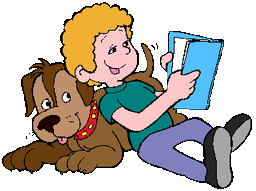
RULES FOR READING WORKSHOP:
1. You must read a book. Magazines, newspapers and comic books don’t have the chunks of texts you need to develop fluency. They won’t help you discover who you are as a reader of literature. (Please note: they are acceptable during transitional periods of the day as well as for reading material at home or during indoor lineup days).
2. Don’t read a book you don’t like. Don’t waste time with a book you don’t love when there are so many great books out there waiting for you. However, you should try to give some books a chance. Sometimes, it takes a couple of chapters before you “settle in” and get used to and interested in a book.
3. If you really don’t like a book, find another one. Browse; ask me, the librarian or a friend for a recommendation.
4. It’s okay to re-read a book you love. This is what readers do.
5. Record every book you finish in your reading log and complete a reading journal entry for each book you read.
6. Collect information about yourself as a reader, look for patterns and take satisfaction in your accomplishments over time.
7. Understand that reading is thinking. Do nothing to distract the teacher or other readers. Don’t put words into our brains as we are trying to escape into the worlds created by the authors of our books.
8. When you confer with me or your partners use a soft voice as I use when I talk to you; whisper.
9. Read and write in your reading journal the whole time.
2. Don’t read a book you don’t like. Don’t waste time with a book you don’t love when there are so many great books out there waiting for you. However, you should try to give some books a chance. Sometimes, it takes a couple of chapters before you “settle in” and get used to and interested in a book.
3. If you really don’t like a book, find another one. Browse; ask me, the librarian or a friend for a recommendation.
4. It’s okay to re-read a book you love. This is what readers do.
5. Record every book you finish in your reading log and complete a reading journal entry for each book you read.
6. Collect information about yourself as a reader, look for patterns and take satisfaction in your accomplishments over time.
7. Understand that reading is thinking. Do nothing to distract the teacher or other readers. Don’t put words into our brains as we are trying to escape into the worlds created by the authors of our books.
8. When you confer with me or your partners use a soft voice as I use when I talk to you; whisper.
9. Read and write in your reading journal the whole time.
READING-BOOK LOGS-DON'T FORGET TO PUT THEM IN YOUR READING NOTEBOOK AND USE THEM:
Your browser does not support viewing this document. Click here to download the document.
| readinglognew.docx | |
| File Size: | 131 kb |
| File Type: | docx |
